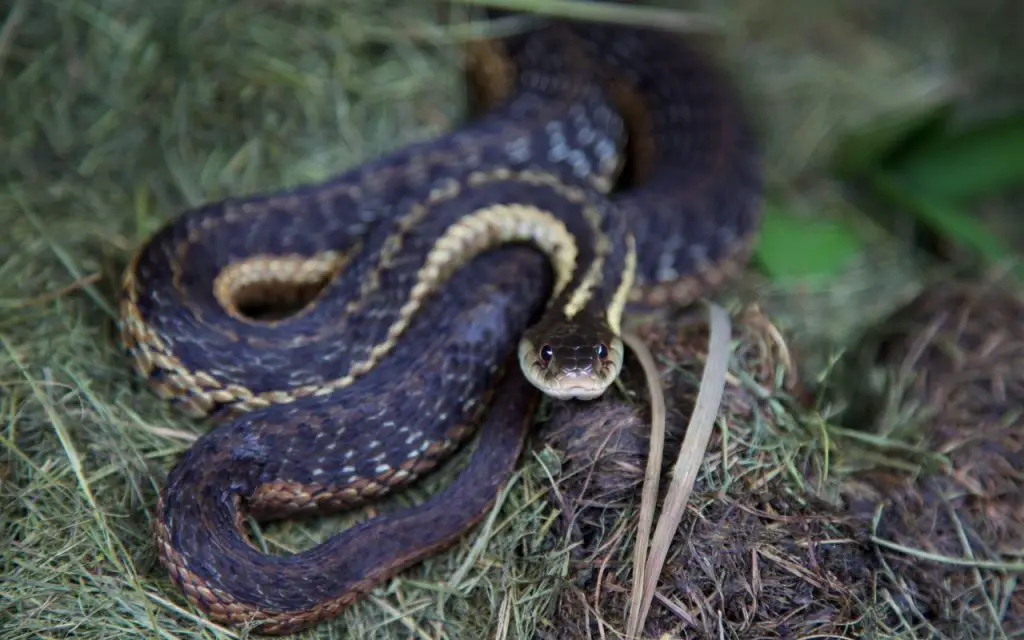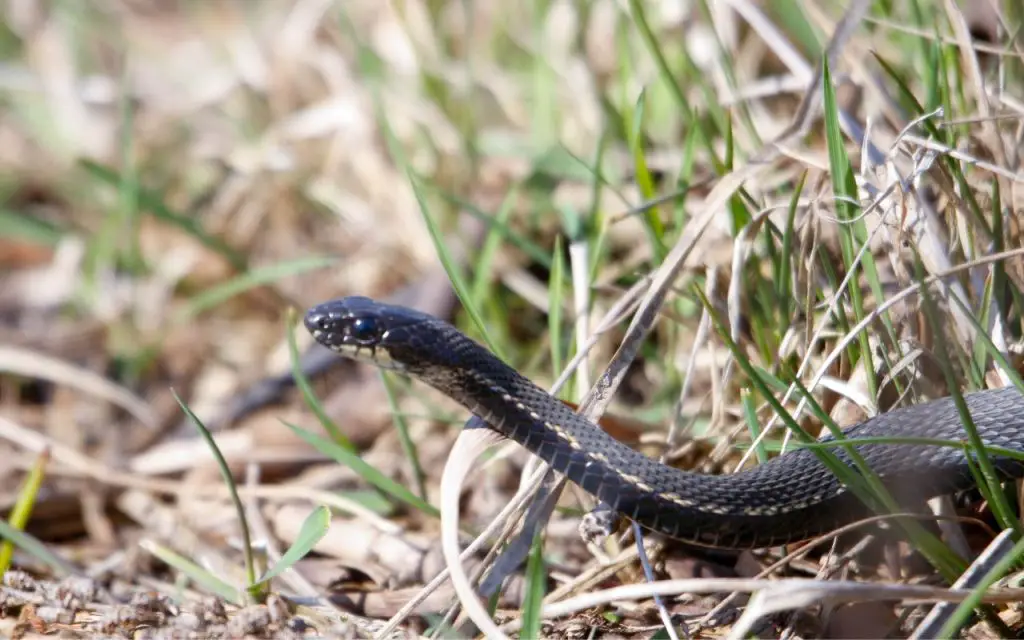As a herpetologist with a particular fascination for garter snakes, I’ve spent countless hours exploring the forests, grasslands, and water bodies of North America, hunting for these fascinating creatures. I’ve been captivated by the spectacular variety of colors and patterns exhibited by garter snakes, and I often get asked one particular question: “Can a garter snake be black?”
Let’s unravel the mystery together…
My Experience with Garter Snakes
Over my many years of herping in the Midwest, I encountered hundreds, possibly thousands, of garter snakes in the wild. They’re a common sight in various habitats throughout North America, from the grassy plains of the Midwest to the damp forests of the Pacific Northwest.
While most people believe garter snakes are always striped and often colorful, it’s crucial to note that they exhibit a remarkable diversity in their appearance.
Now, coming to the question at hand: Can a garter snake be black? The short and simple answer is yes. I’ve had the privilege of observing black garter snakes in their natural habitat, although they are not as common as their more brightly colored counterparts.
The Black Garter Snake: A Rarity
Black garter snakes are a rare sight, indeed. They are not a separate species but rather a color morph, a genetic variant that results in an all-black or mostly black coloration. They typically belong to the species Thamnophis sirtalis, commonly known as the common garter snake.
The black coloration of these snakes is due to a condition called melanism. It’s a genetic variation that results in the excessive production of melanin, the pigment that gives color to a creature’s skin, hair, or, in this case, scales. It’s the same condition that gives us black panthers, which are simply melanistic leopards or jaguars.
In garter snakes, melanism isn’t too common, but when it does occur, it’s a sight to behold. The black garter snake, with its glossy, jet-black scales, offers a stark contrast to the typically colorful species we’re used to seeing.

Unraveling the Enigma: Pros and Cons of Being a Black Garter Snake
Being a black garter snake, while intriguing to the human observer, has its own sets of advantages and disadvantages in the wild.
Advantages of being a black garter snake:
- Thermal Regulation: The dark coloration helps in better absorption of heat from sunlight, allowing the snake to warm up quickly. This can be particularly beneficial in colder regions. Something scientists have observed is that melanistic snakes are much more common near cool habitat types, such as islands and lake shores.
- Camouflage: In certain habitats, like dark soil or dense forests, black garter snakes may blend in better than their brightly colored counterparts, providing them with a camouflage advantage against predators.
- Intimidation: The unusual black color may deter potential predators, as dark colors in nature are often associated with toxicity or danger.
Disadvantages of being a black garter snake:
- Overheating: While the dark color helps in thermal regulation, it can also lead to overheating in hotter climates, making it a potential disadvantage.
- Predation: Depending on the habitat, the black color may stand out and make the snake more visible to predators.
- Mating: If coloration plays a role in mate selection, black garter snakes may face challenges attracting mates.
The Allure of the Black Garter Snake
Despite the potential drawbacks, there’s something undeniably alluring about the black garter snake. Its unique coloration and rarity make it a coveted find among herpetologists and snake enthusiasts.
I remember the first time I found a black garter snake. It was nestled in the underbrush, a shiny obsidian ribbon contrasting with the green foliage. Its scales were glossy, reflecting the sunlight in an almost hypnotic manner.
From that moment, my fascination for this melanistic marvel has only grown. Each black garter snake I find in the wild, which isn’t often, is a thrilling reminder of the incredible diversity and adaptability of nature.
Can a Garter Snake be black? Conclusion…
In conclusion, yes, a garter snake can indeed be black. These rare, black garter snakes serve as beautiful embodiments of nature’s endless surprises. To every aspiring herpetologist and nature enthusiast, I would say: Keep exploring, keep observing, and you too may one day come face-to-face with these elusive creatures of the wild.
Remember, every garter snake, black or otherwise, is a part of the vibrant tapestry of biodiversity that we must strive to understand and preserve.
If you spend a lot of time herping, try to disturb the habitat as little as possible. Also, remember to always put any refugia you disturb back in exactly the same spot.

FAQ related to black Garter Snakes
Are black garter snakes poisonous?
Black Garter Snakes are not poisonous, nor are they any more dangerous than regular Garter snakes. In fact, out of all the known species of Garter Snakes, only a few have been found to have any venom. This venom is far too mild to be a risk to humans, though it probably helps them subdue larger prey such as frogs and toads.
What colors can garter snakes be?
In the wild, most Garter snakes are black or brown with yellow stripes. That said, they are highly variable. Occasionally black (melanistic), blue, red, or pattern less individuals can occur. Sometimes this happens randomly, for example one melanistic snake born amongst normal siblings. Other times, it may be whole populations that gradually take on a different hue, as in the case of the blue Common Garter snakes that live in parts of Florida.
What snakes are mistaken for garter snakes?
Ribbon Snakes are very often mistaken for Garter snakes due to their very similar appearance. If you’d like to learn more about the differences between them, I suggest you read my article on Ribbon Snakes vs Garter Snakes.
Where do black garter snakes live?
Most black Garter snakes belong to the nominate race of the Common Garter Snake (Thamnophis sirtalis), which a lot of people call the Eastern Garter. These snakes are found from the Midwest to New England, and as far south as Florida

